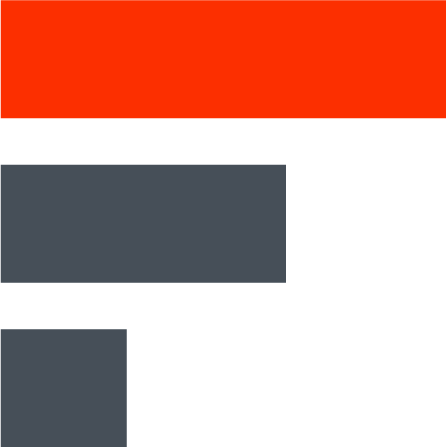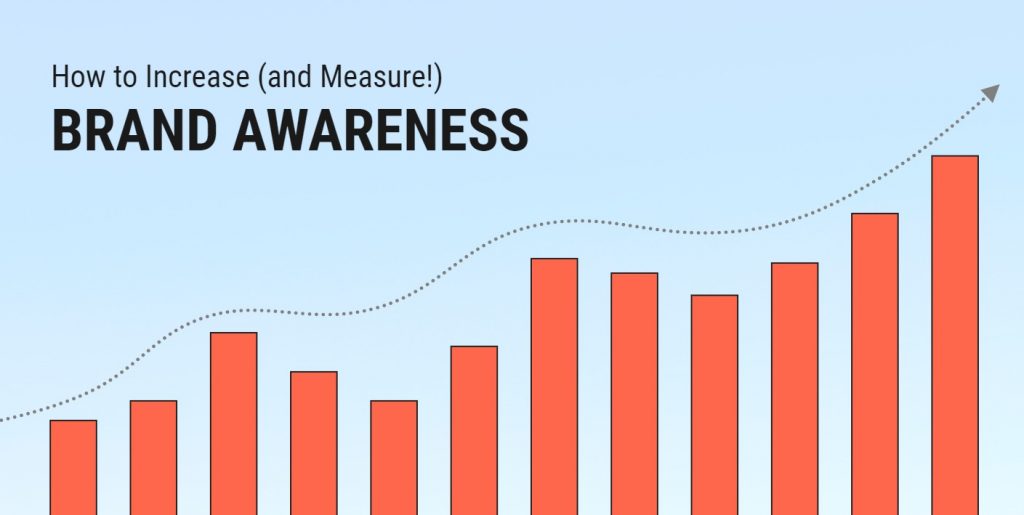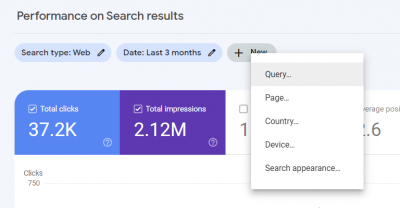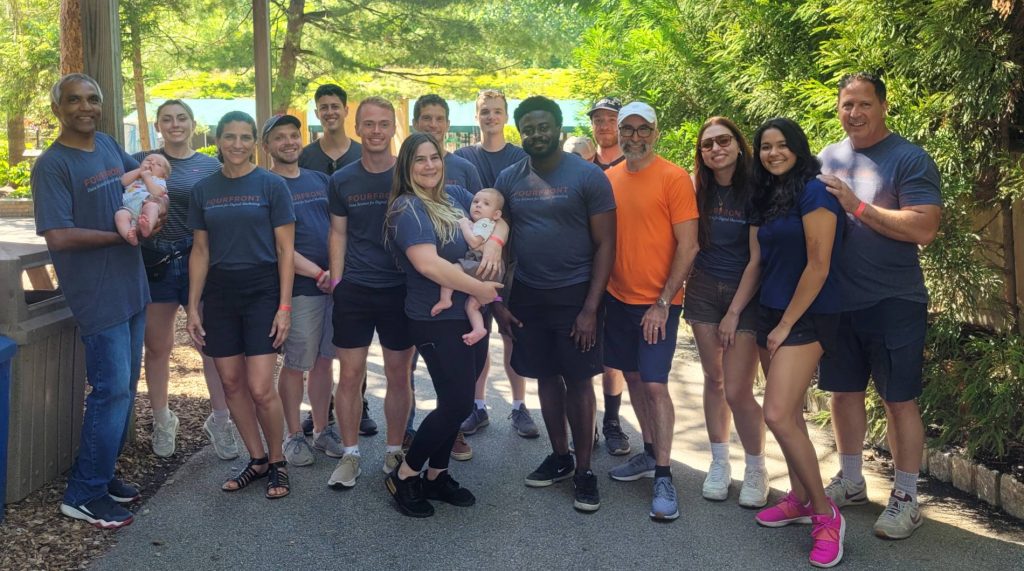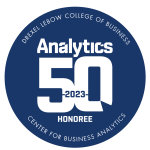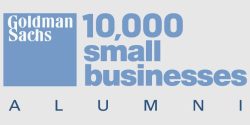This post was collaboratively researched and written by Ben Pearl and Ben Swofford.
As a marketer, one of your primary goals—whether you’re working in-house or at an agency—is to increase the awareness of your or your client’s brand. This concept of brand awareness refers to how familiar an audience is with the brand overall, including the name, logo, and product or service offering. Increasing brand awareness is an outcome that benefits every other key marketing goal, like increasing leads and sales.
The magic comes when you’re able to turn this concept into a quantifiable metric, allowing you to measure how interest in your brand is increasing or decreasing over time. Even in today’s digital world, many marketers struggle to quantify impact in a way that helps hone tactics and ultimately proves your success. Brand interest metrics are one way to do this.
In this post, FourFront’s “Bens” have teamed up to share some of the wisdom we’ve gained helping clients to measure increases in brand awareness. Read on to learn some of the nuances we’ve come up against, and how you can make these concepts work for you.
In this post, you will learn:
What is Brand Awareness?
At a high level, the spectrum of brand awareness starts on the low end with companies whose brands are completely unknown and goes up from there all the way to proprietary eponyms—brand names so commonly known that they are now frequently used to describe the products themselves (think about the trademarked household names we use like “Kleenex” for tissues, “Chapstick” for lip balm, or “Band-Aid” for a bandage).
Chances are, the brand you’re working on falls somewhere in the middle.
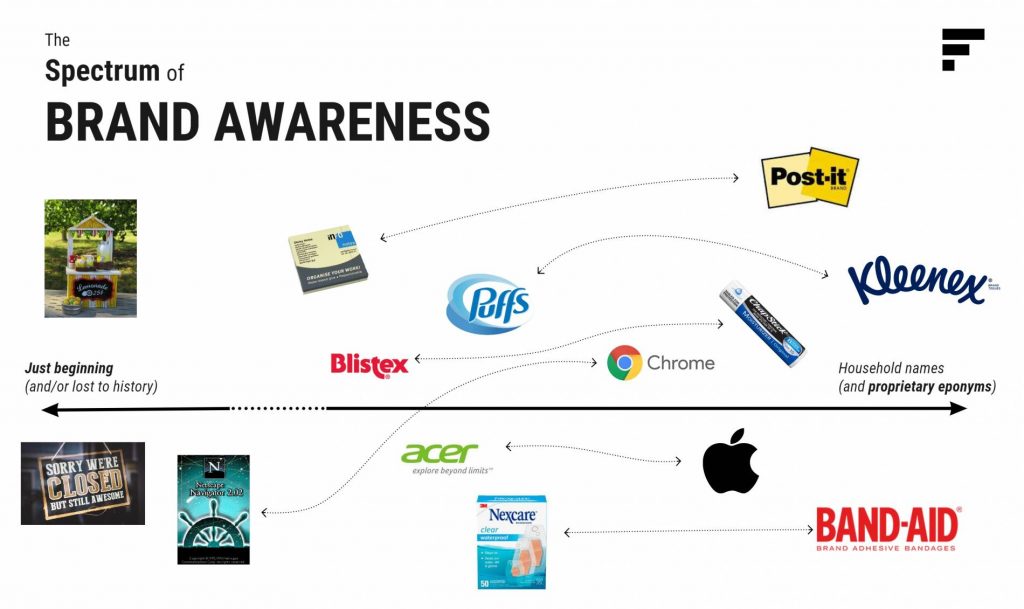
We think about this concept of brand awareness a lot at FourFront, and we often think of brand awareness as very similar if not interchangeable with the concept of “brand interest.” Brand interest measures the increasing or decreasing level of interest prospective customers have in the brand.
Simply put, these terms are shorthand for how familiar the audience is with your organization.
Benefits of Brand Awareness
Most articles out there talking about brand awareness focus on the examples we all know about: Apple is perhaps the most notable since it is currently considered the most valuable brand in the world. These rockstar brands are successful because they have established incredible relationships with their customers. They are so successful that thousands of people identify deeply with these brands.
While the famous examples stand out, it’s also important to keep in mind that brand awareness is something that is at play even for brands with smaller reach. Small or medium sized businesses have quantifiable brand awareness, too. It should be a goal of every marketer to increase the knowledge of the brand in order to increase preference, engagement, leads, and sales.
Increasing awareness is key for dozens of reasons. Most important, when brand interest is higher that means several crucial business outcomes are also likely to be occurring:
- Brand recognition* is increasing
- More people are entering the marketing funnel
- Brand trust and credibility is increasing
- There is higher association between the brand and its products or services
- Preference for your brand is increasing compared to competitors
- The value of the brand is increasing
- Recruitment and retention will become more effective
- Customer loyalty is increasing
- Market share is increasing
- Sales become easier
- Media attention is increasing
- Traffic to the website is increasing
One quick sidebar: While we often think about brand interest and brand awareness as very similar, it’s helpful to make a distinction between brand recognition. Brand recognition refers to the extent to which a consumer can correctly identify your brand based on visual indicators.
While similar to awareness and interest, which considers the broad understanding and intention people have toward a brand, recognition is focused on being able to recall or correctly associate brand assets like the name or logo. (This is important, but it’s not the primary focus of this article.)
How to Measure Brand Awareness
While we have our preferred metric for measuring increases in brand awareness here at FourFront (more on that below), there are in fact many accepted ways to do it.
Here are some popular methods:
Similar to brand awareness, brand recall attempts to measure how well an audience remembers a brand. This can be studied in an “aided” or “unaided” test using tactics such as surveys. There are similar strategies that measure brand loyalty, too, such as net promoter score (NPS) or repeat purchase rate (RPR). The downside to these tactics is that they can be time consuming and expensive, and they also only look at a limited cross section of your audience.
This is a metric popular in advertising that attempts to measure relative prominence of a brand compared to competitors in areas such as social media, PR, and digital ads (for example, Google Ads has a built-in metric called impression share). However, share of voice has less to do with awareness than with exposure.
Google Analytics segments traffic into various default channels. One of them is direct traffic. This channel can be a bit complicated, but the easiest way to think about it is that it’s traffic in which users have typed your URL directly into the browser or have clicked on a bookmark. So, increases in this type of traffic may indicate that interest in your brand has increased because more users are coming directly to your site. However, this metric is a bit imprecise because of how it is essentially a fallback channel for traffic Google doesn’t know how to categorize. Plus, spikes can also be caused by spam bots or tagging issues.
Referral traffic measures how often users visit your site from another website’s link. Similarly, you can measure things like your total links from other websites (known as backlinks) or even your website’s domain authority score (which is heavily influenced by backlinks). This is a decent measure of brand awareness since increases indicate that you are seen as more authoritative, but it provides a limited view.
Social listening tools let you see how often your brand is mentioned in social media posts over time. If you have the means, this is a very reliable way to track how often users are showing deep engagement with your brand. However, this can also be very negative in some cases, so it’s important to use a tool that lets you track sentiment of these posts. Most of these tools have come at a price, however you can also use basic tools like Google Alerts to track basic news mentions.
This is our preferred method!
We frequently measure brand awareness using brand interest metrics that are based on filtered data we get from Google. The data is free and is a very reliable indicator of increasing awareness (see below).
Why you should measure brand awareness with SEO data
Our preferred metrics—branded clicks and branded impressions—are based on a few key concepts:
- When more people are aware of and interested in a brand, the number of Google searches for the brand will naturally increase.
- Conversely, when fewer people are engaging with the brand, then they are less likely to search for it online, and branded clicks/impressions will therefore decrease.
Why is this a reliable metric?
- Everybody searches. Google—which dominates search with ~92% market share—is used to make a search billions of times per day. Google also provides information about how your site appears in search results for free as long as you have a Google Search Console account.
- Search is a fundamental behavior of digital users. Many people will even navigate to a website using search—in other words, they type a brand name into their Chrome browser and hit enter rather than typing the full “.com” address.
For these reasons, we love using branded clicks and impressions to help tell stories with data, illustrating how our marketing strategies impact brand awareness over time.
Try it Yourself
This data is free: All you need is a Google Search Console account. However, you need to take a few extra steps to make the data work.
First, you need to determine which queries you want to count as “branded.” We typically include any keyword that includes the brand name, abbreviations or shorthand, the names of the brand’s products or services, and in some cases team members’ names as well.
We prefer to create RegEx filters that focus on a website’s click and impression data from these specific branded terms, conjuring an excellent indicator of either increasing or decreasing brand interest.
However, you can get a quicker read on your brand’s relative awareness/interest levels by simply using your website’s Google Search Console dashboard:
- Open Google Search Console and make sure you’re in the correct property.
- Click into the Search results report under the Performance tab.
- Click the “+ New” icon above the report to add a “Query” filter. Enter a branded query, such as the brand name or the name of a team member.
- The Report will now show you clicks and impressions over time. For deeper results, use the Date filter to extend the time range and/or show comparisons with previous time ranges.
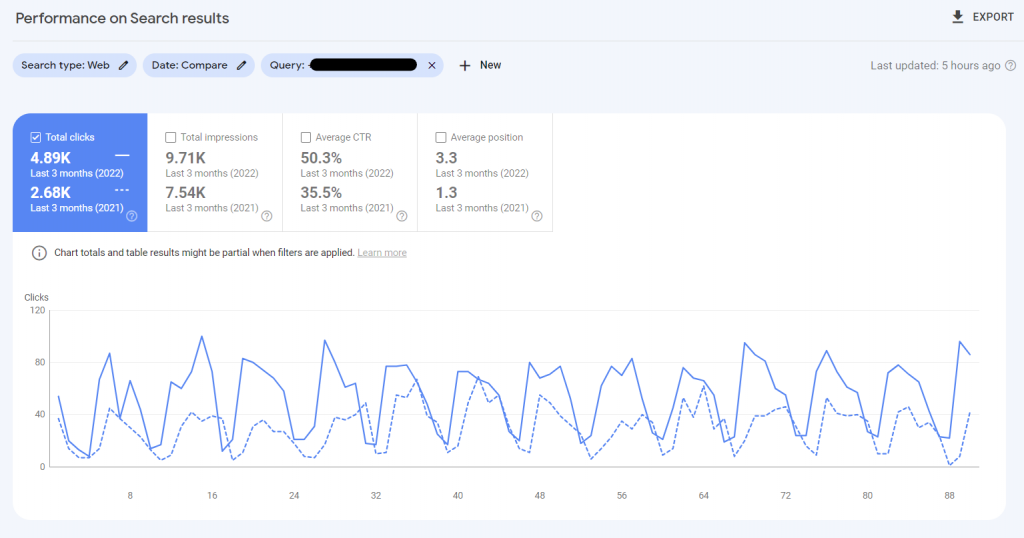
While advanced reporting can provide more in-depth information, this is a basic approach to quickly get the pulse of your brand’s interest levels within search results.
Once you have this baseline, your next likely question will be: How can I increase these numbers?
9 Ways to Increase Brand Awareness
In some cases, we may notice declining brand interest for one of our clients. In other cases, a client’s brand is so new that we need to build interest from essentially 0.
In either of these situations, the tactics below have been proven to move the needle.
One of the most straightforward ways to improve brand interest is by increasing ad spend or beginning new advertising efforts, particularly in ways that either introduce the brand to new people (such as Awareness campaigns on Google) or that re-emphasize the brand to the existing audience (such as through Retargeting or by using existing Audience Segments on Google or Customer Lists on Facebook). These are often done through the Google Ads or Facebook Ads platforms, but any advertising applies.
Branded content is a related tactic that can also be considered.
How to implement:
- Consider increasing ad spend for existing ad campaigns or beginning a new ad campaign.
Similar to advertising, public relations-style outreach efforts will naturally lead to more people being introduced to the brand and in turn engaging with the brand on search. This might include pitching articles to news organizations or being interviewed for an article, podcast, or video.
From an SEO perspective, PR efforts are also a great way to improve the website’s authority through the natural link-building that often occurs. So, it is always best practice to take advantage of these opportunities to link back from articles and partner sites to your own website in whatever way you can. For example, if a news site mentions your brand but does not link back to you when doing so, look for a way to contact the organization such as by reaching out to the editor, and politely ask if they can add the link.
How to implement:
- Think about the publications that your audience uses and consider ways to build relationships with those organizations/writers. Consider using tools such as SparkToro to find the best outlets for your brand.
Each member of your organization likely has some kind of online brand of their own. From a highly-visible CEO to the most junior colleague, each person’s online presence provides a potential opportunity to improve brand awareness.
Similarly, any company members’ blog posts should be properly authored in order to highlight that person’s Expertise, Authority, and Trustworthiness (E-A-T) for the topics of their posts.
Another related concept is thought leadership. Brand awareness will increase any time a team member represents the brand by speaking at an event, writing an article, or answering questions in popular forums (such as Quora, LinkedIn, Reddit, etc.).
How to implement:
- Optimize key team members’ online profiles and ensure they feature and link back to the website.
- Audit and improve the Team section of the site and ensure blog authors are optimized for E-A-T.
- Consider opportunities to leverage individual expertise and visibility in order to increase brand awareness.
Similar to PR campaigns, guest posting (aka “guest blogging”) involves creating and contributing content to third-party websites. This is a great way to introduce the brand and its mission to a new audience.
The key is to find other organizations that operate in your industry but do not compete directly with your brand. For example, if you or your clients are marketing something related to music, you might look for opportunities to contribute articles for music industry news sources like Pitchfork.
There’s even a free, handy list of websites open to guest posting you can check out.
When you find a great fit, it can be a great deal: You get new exposure, and the other organization gets to use your great content.
How to implement:
- Explore blogs, online platforms, or forums that align with your audience and industry. Look for opportunities to contribute or partner with these entities.
Events such as local networking events, meetups, and webinars are great avenues for spreading awareness to new and related audiences. If applicable, sponsoring or hosting an event will help display the brand name in a more prominent fashion and lead to greater recognition. Depending on the event type, there could be additional opportunities to explore local partnerships and initiatives that help establish the brand’s name recognition in a targeted area, too.
It’s important to note that offline promotions can be small engagements, such as handing out business cards to targeted individuals. Attending a conference or buying a vendor booth at an industry fair are also options.
How to implement:
- Consider hosting a webinar, sponsoring an event, or any tactic to build the brand’s visibility at an industry conference.
Emails are another way to ensure you are engaging your existing audience. There may also be ways to improve newsletter signups in order to grow the email list for improved brand engagement over time.
How to implement:
- Revisit your email marketing strategy, as well as email sign-up CTAs on the website. Look for opportunities to improve the way you engage your audience via email.
Any time you can get people to share or link to your content, your brand will reap the rewards. This might include infographics, videos, or really any online asset that provides a unique value to the audience.
How to implement:
- Ensure you have an up-to-date understanding of your audience’s content requirements.
- Determine your existing media types that perform well with your target audience, and consider the best new assets to add to the website.
- Ensure that it is easy to share your existing resources on social.
Increasing or tweaking your social strategy could help get your brand name in front of a larger audience or improve engagement with the current audience.
Oftentimes, the content strategy on the website will impact this, so be sure that those content efforts are regularly feeding into the social media team.
Additionally, consider ways to leverage existing partnerships or reach out to any influencer accounts in your space. Any time you can get another person or entity to engage with or share your content, you will reach a much wider audience. We’ve seen this with a number of clients recently, and the influencer space is likely to only keep growing.
How to implement:
- Consider opportunities to leverage your existing high-value web resources, to double-down on what’s worked in the past, or to explore new ideas for engaging content. Be sure to promote new pages on social channels (and re-use poplar existing pages as well).
- Consider tactics that will improve social media performance, such as boosting posts or encouraging dialogue/sharing. Don’t forget to leverage partner relationships and consider engaging an influencer if possible.
It’s important to remember that not all brand interest is necessarily good interest. We have seen branded clicks and impressions increase following negative press or other issues that may be best avoided.
If you take the perspective that “all press is good press,” this may in fact be the quickest way to increase your brand interest! However, fostering brand trust is paramount to any long-term marketing efforts and is especially important for SEO. So, when it comes to improving brand awareness, we encourage a focus on fostering authentic loyalty and trust with an eye for long-term, sustainable growth.
Bonus!
As you can see in the list above, as long as it’s positive and successfully executed, almost any marketing tactic you can think of could have an impact on your brand awareness.
If you’re not convinced by those ideas, here are some bonus tactics you might consider with a few hat-tips (H/T) pointing to some famous examples.
- Cultivate user-generated content, also known as UGC (H/T Airbnb)
- Enhance customer satisfaction
- Create a podcast (H/T Microsoft)
- Focus on creating more emotional connection or enhancing your brand’s storytelling
- Improve your local SEO
- Focus on improving the user experience of your digital offerings (H/T FiveThirtyEight)
- Offer “freemium” products (H/T Spotify)
- Host an all-out product launch event (H/T Apple)
- Create referral programs
- Create a viral marketing campaign—that’s easy, right? (H/T Coca-Cola)
- Create a catchy slogan or a fun personality/mascot (H/T Gritty)
Sleep with one eye open tonight, bird. pic.twitter.com/wLmGBa0Oyh
— Gritty (@GrittyNHL) September 24, 2018
If you liked this post, be sure to check out why successful brands partner with our SEO team for long-term results, incredible web analytics, and more.
If you have any questions or thoughts, please let us know in the comments below.
